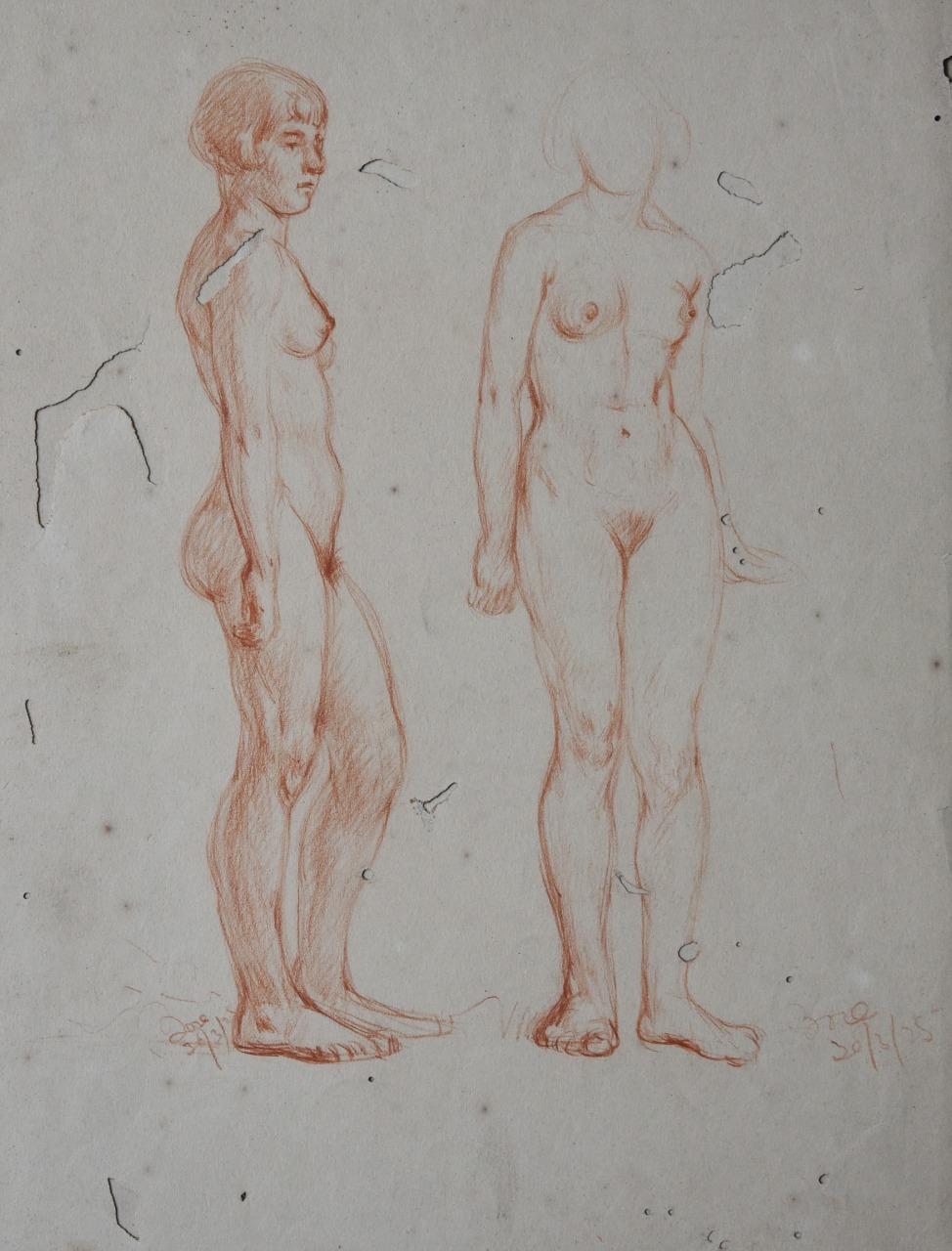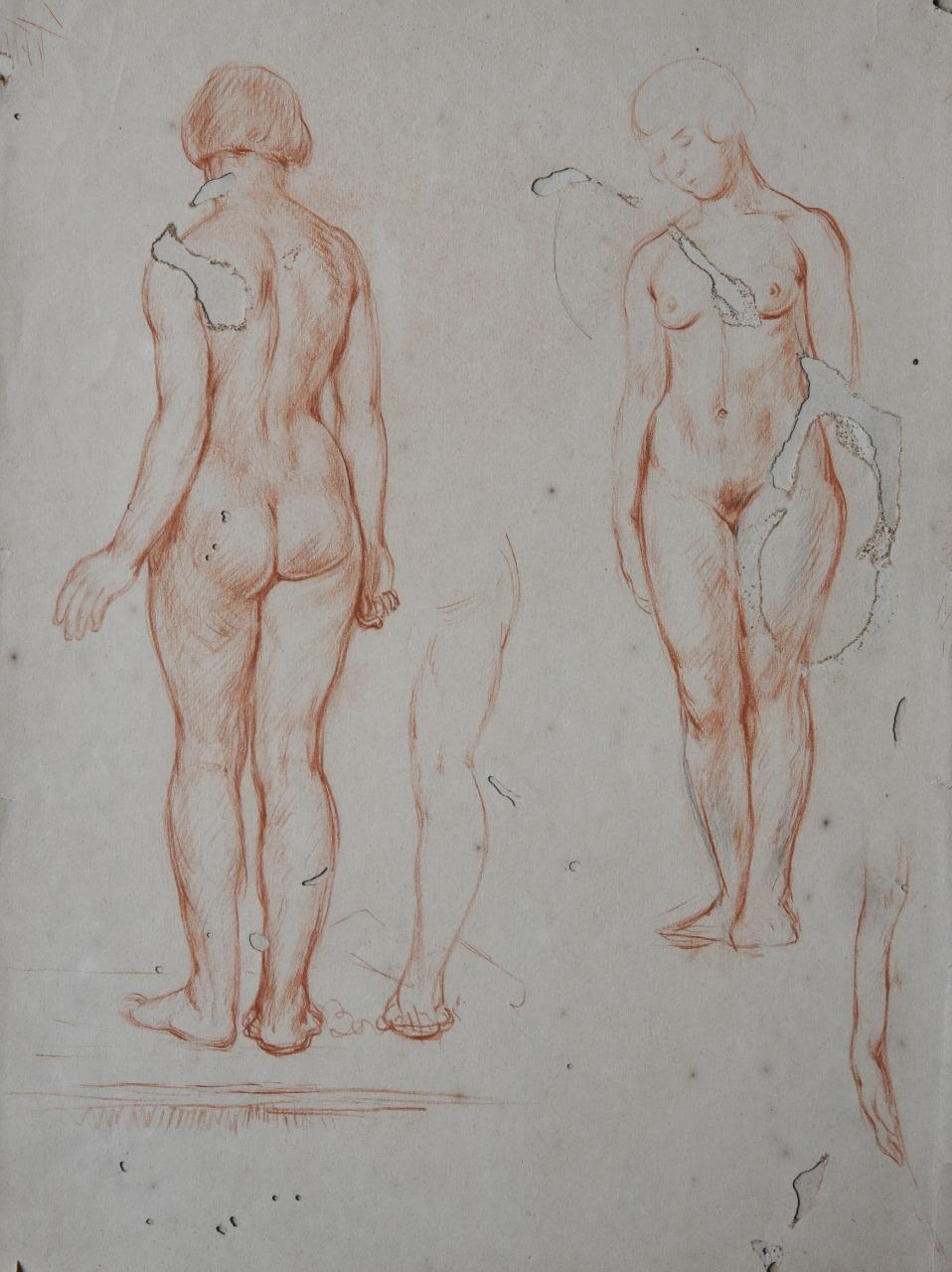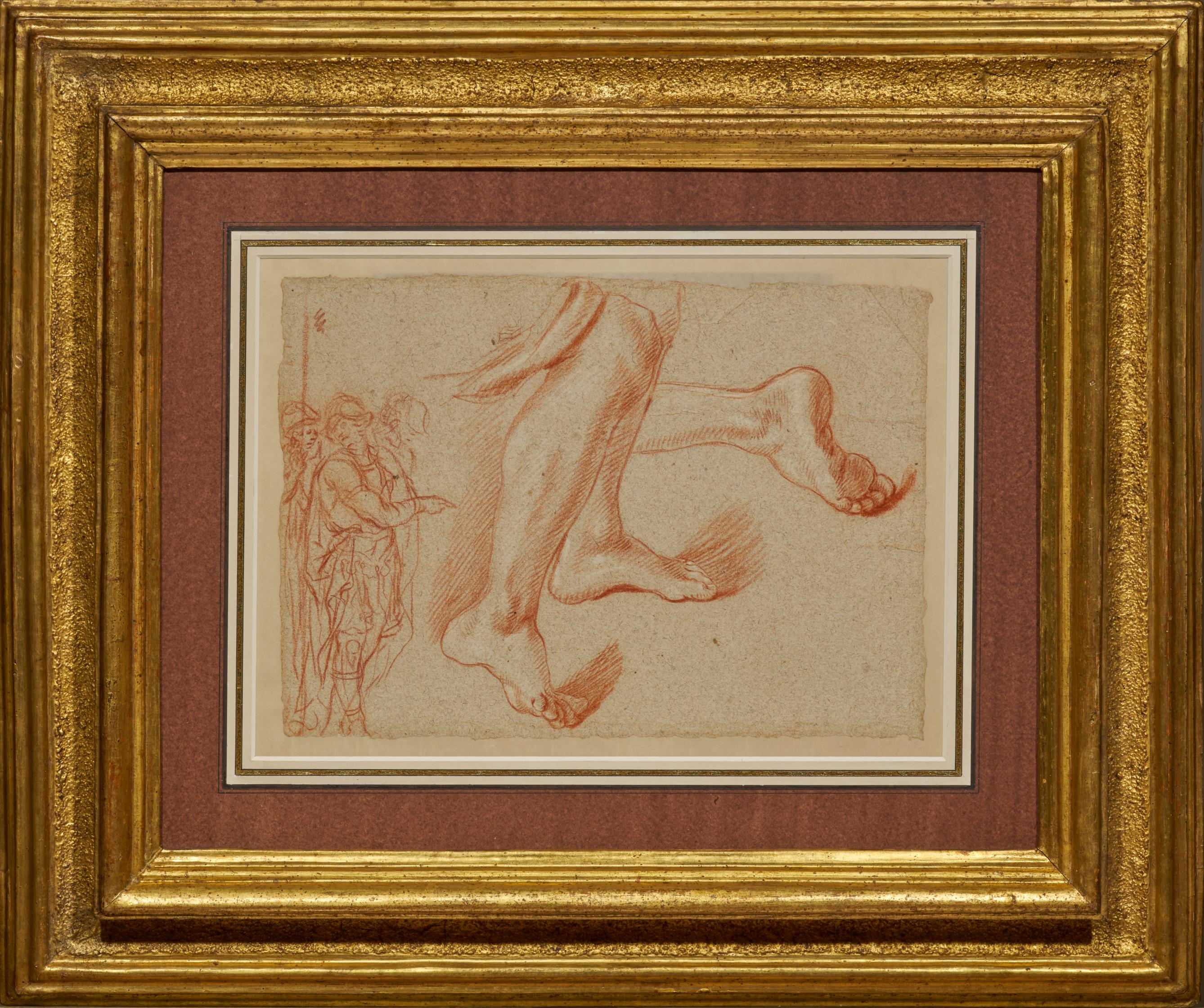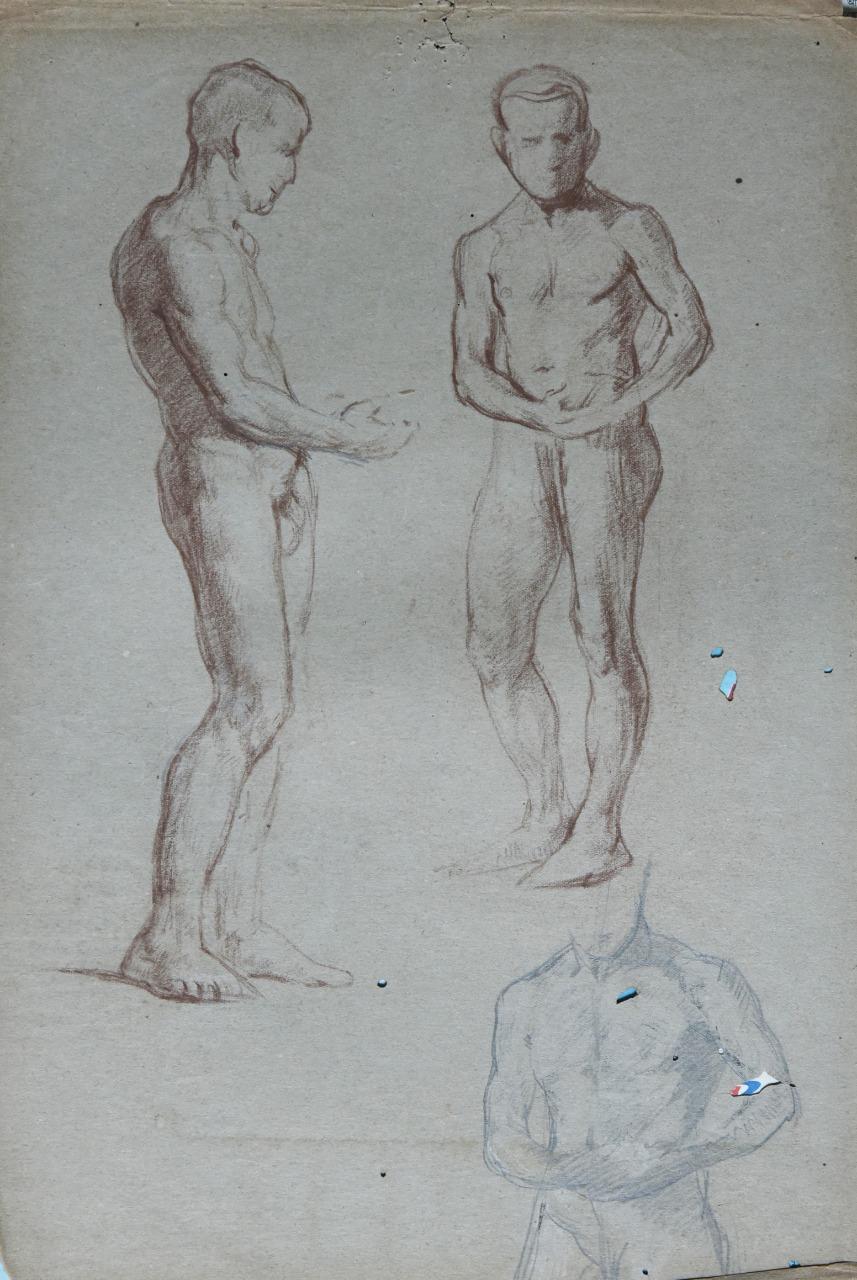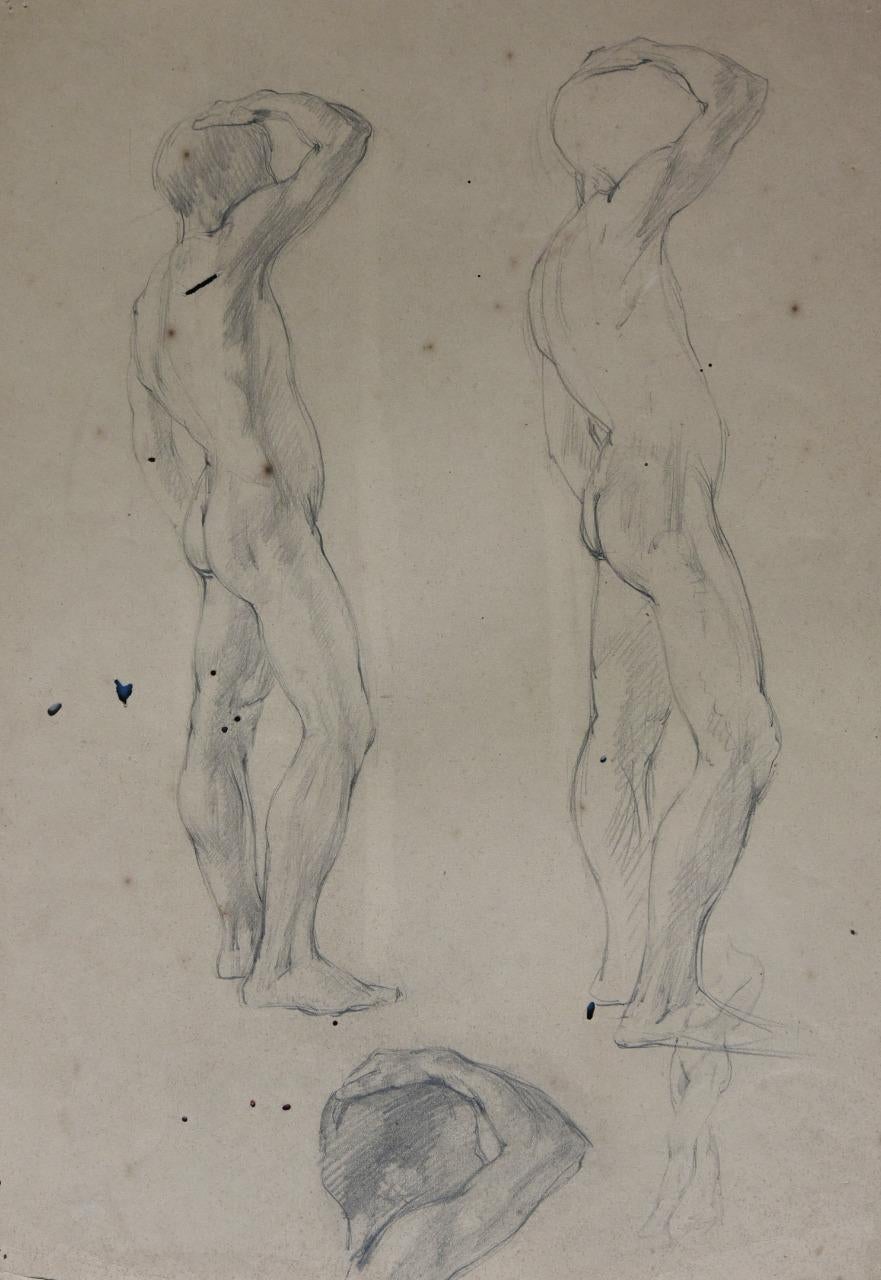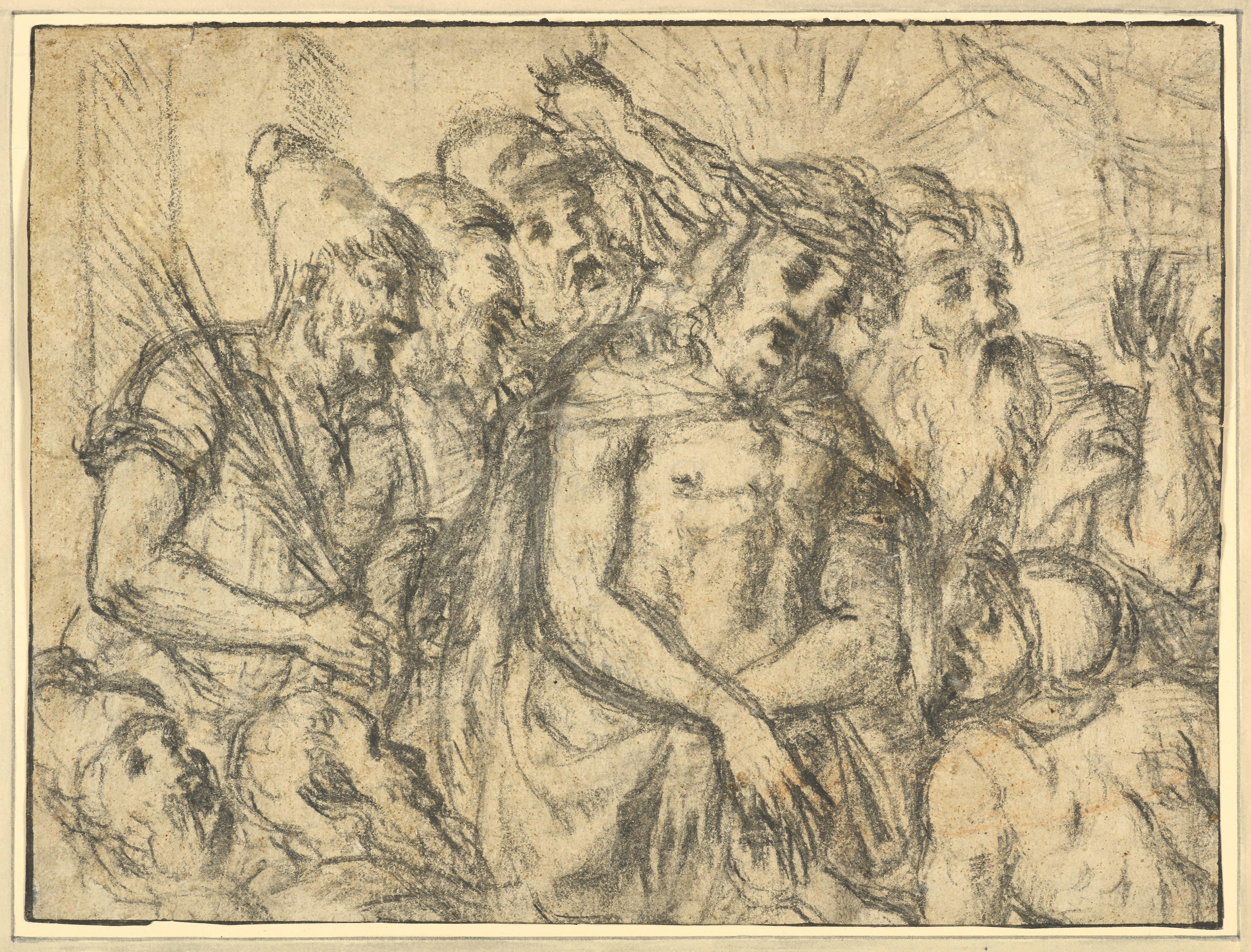Items Similar to Femele 80’s
Want more images or videos?
Request additional images or videos from the seller
1 of 10
JacklennarthFemele 80’s2023
2023
About the Item
Pastel chalk on textured paper, Series of 20 unique pieces. 100cm x 70cm x .05cm - framing option available.
- Creator:Jacklennarth (1989, Mexican)
- Creation Year:2023
- Dimensions:Height: 39.38 in (100 cm)Width: 27.56 in (70 cm)Depth: 0.02 in (0.5 mm)
- More Editions & Sizes:edition of 20Price: $300
- Medium:
- Movement & Style:
- Period:
- Framing:Framing Options Available
- Condition:
- Gallery Location:Ciudad De México, MX
- Reference Number:1stDibs: LU2364212504052
About the Seller
No Reviews Yet
Vetted Seller
These experienced sellers undergo a comprehensive evaluation by our team of in-house experts.
Established in 2019
1stDibs seller since 2023
- ShippingRetrieving quote...Ships From: Ciudad de México, Mexico
- Return PolicyA return for this item may be initiated within 14 days of delivery.
More From This SellerView All
- More than muscleBy Ivan BarreraLocated in Ciudad De México, MXMore than muscle Iván Barrera Collage sobre papel 130 X 100 cm, 2022Category
2010s Contemporary Figurative Paintings
MaterialsPaper, Acrylic
- En tus manosLocated in Ciudad De México, MXTitle: In your hands Polyptych 9 pieces of 20x20cm Acrylic on cotton canvas Unique pieceCategory
2010s Contemporary Figurative Paintings
MaterialsCotton Canvas, Acrylic
- #115By Ivan BarreraLocated in Ciudad De México, MXIvan Barrera #115 Acrílico sobre vidrio enmarcado, 22.5 x 22.5 cm x 3cm, 2020 Si un retrato tradicional rinde tributo a la efigie de nuestro aspecto físico, ¿qué sucede si deseamos ...Category
2010s Contemporary Mixed Media
MaterialsGlass, Acrylic
- #120By Ivan BarreraLocated in Ciudad De México, MXFrom the series "Identities" #120 Ivan Barrera 22.5cm x 22.5cm x 3cm framed acrylic on glass Identities is a project where the portrait is not born on a whim to immortalize our app...Category
2010s Contemporary Mixed Media
MaterialsGlass, Acrylic
- #107By Ivan BarreraLocated in Ciudad De México, MXFrom the series "Identities" #107 Ivan Barrera 22.5cm x 22.5cm x 3cm framed acrylic on glass Identities is a project where the portrait is not born on a whim to immortalize our app...Category
2010s Contemporary Mixed Media
MaterialsGlass, Acrylic
- #109By Ivan BarreraLocated in Ciudad De México, MXFrom the series "Identities" #109 Ivan Barrera 22.5cm x 22.5cm x 3cm framed acrylic on glass Identities is a project where the portrait is not born on a whim to immortalize our app...Category
2010s Contemporary Mixed Media
MaterialsGlass, Acrylic
You May Also Like
- Royal Academy Series-4, Conte on Paper, Modern Artist Atul Bose "In Stock"Located in Kolkata, West BengalAtul Bose - Royal Academy Series-4 Conte on Paper, 15 x 11.2 inches (Unframed Size) 1924-26 (Delivered Unframed in as is condition) Atul Bose was a master artist whose creative journey spanned several decades and left an indelible mark on the Indian art scene. He was born in 1898 in a small village in Bengal and showed an early aptitude for art. Despite facing financial difficulties, he pursued his passion and enrolled in the Government School of Art in Calcutta. Bose's early works were influenced by the Bengal School of Art, which was a movement that sought to revive traditional Indian art forms. However, over time, Bose developed his own unique style that blended elements of Indian art with European modernism. He was particularly influenced by the works of artists like Paul Cezanne and Georges Braque. Bose spent two years, 1924-6, at the Royal Academy. He was heavily influenced there by the post-impressionist Walter Sickert. He refused an invitation to help decorate the pavilion at the British Empire Exhibition in 1924 with Mukul Dey...Category
1920s Modern Figurative Drawings and Watercolors
MaterialsInk, Conté, Paper, Pen
- Royal Academy Series-4, Conte on Paper, Modern Artist Atul Bose "In Stock"Located in Kolkata, West BengalAtul Bose - Royal Academy Series-4 Conte on Paper, 15 x 11.2 inches (Unframed Size) 1924-26 (Delivered Unframed in as is condition) Atul Bose was a master artist whose creative journey spanned several decades and left an indelible mark on the Indian art scene. He was born in 1898 in a small village in Bengal and showed an early aptitude for art. Despite facing financial difficulties, he pursued his passion and enrolled in the Government School of Art in Calcutta. Bose's early works were influenced by the Bengal School of Art, which was a movement that sought to revive traditional Indian art forms. However, over time, Bose developed his own unique style that blended elements of Indian art with European modernism. He was particularly influenced by the works of artists like Paul Cezanne and Georges Braque. Bose spent two years, 1924-6, at the Royal Academy. He was heavily influenced there by the post-impressionist Walter Sickert. He refused an invitation to help decorate the pavilion at the British Empire Exhibition in 1924 with Mukul Dey...Category
1920s Modern Figurative Drawings and Watercolors
MaterialsInk, Conté, Paper, Pen
- A red chalk study sheet by Baldassare Franceschini, known as VolterranoLocated in PARIS, FRThis fresh sanguine sheet presents various studies placed next to each other in no apparent order. Two of the feet studies are preparatory to the first major commission received by the young Baldassare Franceschini, shortly after his installation in Florence, the frescoes for the Medici Fastes. This cycle was executed between 1636 and 1646 for the Villa La Petraia, a Medici villa on the outskirts of Florence, which allows us to date this sheet to the artist's youth. 1. The Medici Fastes, the first major commission for a young artist Born in Volterra in 1611, the town from which he took his nickname, Baldassare Franceschini apprenticed with his father, a sculptor of alabaster, one of his home town's specialities, and studied with Cosimo Daddi (1540-1630), a local artist. The Marquis Inghirami, who spotted his talent, sent him to the workshop of Matteo Rosselli (1578 - 1650) in Florence, which was also attended by Francesco Furini (1603 - 1646). In 1636, Lorenzo de' Medici, the youngest son of Ferdinand Ier and Christine of Lorraine, chose the 25-year-old artist, again on the advice of the Marquis Inghirami, to decorate with frescoes the loggias of the inner courtyard of the Villa La Petraia, which he had just inherited on the death of his mother. The project lasted about ten years and included ten scenes placed symmetrically in two loggias on either side of the courtyard: four main scenes and six placed above the doors, each to the glory of a member of the Medici family. This decoration was his major secular project, but Volterrano also executed several religious frescoes and a few easel paintings, often with less success. Among the religious commissions, we can cite the dome of the Colloredo chapel dedicated to Saint Lucy...Category
Mid-17th Century Old Masters Figurative Drawings and Watercolors
MaterialsPaper, Chalk
- Royal Academy Series-7, Conte on Paper, Modern Artist Atul Bose "In Stock"Located in Kolkata, West BengalAtul Bose - Royal Academy Series-6 Pencil on Paper, 15 x 11.2 inches (Unframed Size) 1924-26 (Delivered Unframed in as is condition) Atul Bose was a master artist whose creative journey spanned several decades and left an indelible mark on the Indian art scene. He was born in 1898 in a small village in Bengal and showed an early aptitude for art. Despite facing financial difficulties, he pursued his passion and enrolled in the Government School of Art in Calcutta. Bose's early works were influenced by the Bengal School of Art, which was a movement that sought to revive traditional Indian art forms. However, over time, Bose developed his own unique style that blended elements of Indian art with European modernism. He was particularly influenced by the works of artists like Paul Cezanne and Georges Braque. Bose spent two years, 1924-6, at the Royal Academy. He was heavily influenced there by the post-impressionist Walter Sickert. He refused an invitation to help decorate the pavilion at the British Empire Exhibition in 1924 with Mukul Dey...Category
1920s Modern Figurative Drawings and Watercolors
MaterialsConté, Paper, Ink, Pen, Pencil
- Royal Academy Series-6, Pencil on Paper, Modern Artist Atul Bose "In Stock"Located in Kolkata, West BengalAtul Bose - Royal Academy Series-6 Pencil on Paper, 15 x 11.2 inches (Unframed Size) 1924-26 (Delivered Unframed in as is condition) Atul Bose was a master artist whose creative journey spanned several decades and left an indelible mark on the Indian art scene. He was born in 1898 in a small village in Bengal and showed an early aptitude for art. Despite facing financial difficulties, he pursued his passion and enrolled in the Government School of Art in Calcutta. Bose's early works were influenced by the Bengal School of Art, which was a movement that sought to revive traditional Indian art forms. However, over time, Bose developed his own unique style that blended elements of Indian art with European modernism. He was particularly influenced by the works of artists like Paul Cezanne and Georges Braque. Bose spent two years, 1924-6, at the Royal Academy. He was heavily influenced there by the post-impressionist Walter Sickert. He refused an invitation to help decorate the pavilion at the British Empire Exhibition in 1924 with Mukul Dey...Category
1920s Modern Figurative Drawings and Watercolors
MaterialsInk, Pencil, Conté, Paper, Pen
- Christ before Herod, a drawing from the School of TitianLocated in PARIS, FRThis vigorous drawing is clearly inspired by the numerous compositions on the Ecce Homo theme which were produced by Titian and his workshop at the painter's maturity. However, the number of characters and their expressionist treatment, the many variations to Titian's paintings reveal a drawing made by an original artist, perhaps of foreign origin, belonging to the peripheral circle of the "Titian solar system”, as described by the art historian Enrico Maria del Pozzolo. 1. Titian, the leading artist of 16th century Venetian painting and his botteghe Tiziano Vecelli (or Vecellio), known as Titian, was born between 1489 and 1490 in Pieve di Cadore in the Veneto region of Italy into a wealthy family of soldiers and lawyers. At the age of 15, he joined the studio of Giovanni Bellini, where he became friend with Giorgione, ten years his senior. Giorgione introduced him to a new pictorial style in which forms are defined by colour and pictorial substance, freeing himself from the meticulous underlying drawings characteristic of Bellini's painting. Titian became the official painter of the Republic of Venice upon Bellini's death in 1516. In 1518, the completion of his Assumption for the church of Santa Maria Gloriosa dei Frari in Venice established his reputation as the leading painter of the Venetian school: throughout his career, Titian had a considerable impact on other artists of his time, whether they were direct collaborators, occasional contributors, or other artists under his influence. Considered one of the greatest portraitists of his time, his fame spread throughout Europe and he became the official painter of the greatest European families: the Gonzagas, the Farneses (Alessandro Farnese, of whom he executed several portraits, was elected pope in 1534 under the name of Paul III), the Habsburgs (he went to Augsburg in 1548 to paint the portrait of Charles V and King Philip II of Spain, his successor, later became the artist's main patron). As Titian almost reached the age of 90 years, he saw during his lifetime the death of many of his loved ones (his wife Cecilia, his brother Francesco and his son Orazio). A pathetic feeling appears in his late artworks, such as his famous Pieta, his last work intended to decorate his tomb which remained unfinished. Titian's success was also based on the establishment of a large and versatile workshop, which, alongside the traditional assistance in the production of certain paintings, ensured the publication of numerous woodcuts, allowing the master's works to be widely distributed. Long ignored by art historians, the individual stories of these various collaborators, the organisation of this workshop and the interactions of the collaborators with the master are at the heart of contemporary studies on the artist. 2. A complex composition with expressionist overtones Executed with great virtuosity in black chalk, the composition of our drawing is complex, even slightly confused and probably reflects several phases of execution, if not several hands. The scene is organised around the characters of Christ and an executioner wearing a Phrygian cap. Christ is presented at mid-body, slightly at an angle, his torso bare, his shoulders draped in a cloak, his hands clasped together and probably bound. His head, as if weighed down by the crown of thorns, is slightly bent forward. The eyes and mouth are hollowed out by the black chalk to better express his sorrow. The man wearing a Phrygian cap holds a whip in his right hand, while his left hand, barely outlined, seems to be pulling aside Christ's tunic as if he were about to scourge him. Two other men, who may have been added at a later stage, occupy the space between the executioner and Christ. One is depicted in profile, while the one behind Christ appears to be wearing a military helmet. In an indistinct gesture, his left arm is raised as if to strike Christ. Slightly behind Jesus on his left side, appears a bearded old man wearing a turban. With his left arm raised, he holds out the palm of his hand in a gesture of amazement. His face is finely executed and contrasts with the hand depicted in a rather crude manner. This character may also have been added at a later stage, as he does not fit in perfectly behind the group formed by Jesus and his executioner. This frieze is completed in the left foreground by two additional figures depicted in three-quarter view. Soberly sketched but with great fluidity, only their heads emerge, as if Christ and his executioners were situated on a pedestal above a large crowd. Finally, on the right-hand side of the composition, a second helmeted soldier is depicted. His musculature can be seen under his armour while he stares intently at Christ. He is smaller than the other figures, even though he appears in the front row, revealing a certain clumsiness on the part of the artist. 3. Ecce Homo, one of Titian’s favourite subjects in his twilight years In 1543, Titian tackled the theme of the Ecce Homo in a masterly composition now in the Kunsthistorisches Museum in Vienna. Christ is presented by Pilate, dressed in an antique costume, at the top of a staircase, in a large, highly architectural setting animated by a crowd of characters. The title of the painting refers to a passage from the Gospel of St John (19, 1-5): “Then Pilate took Jesus and had him flogged. The soldiers twisted together a crown of thorns and put it on his head. They clothed him in a purple robe and went up to him again and again, saying, “Hail, king of the Jews!” And they slapped him in the face. Once more Pilate came out and said to the Jews gathered there, “Look, I am bringing him out to you to let you know that I find no basis for a charge against him.” When Jesus came out wearing the crown of thorns and the purple robe, Pilate said to them, “Here is the man!” From the 1540s onwards, Titian and his workshop repeatedly depicted the Christ of Sorrows for their principal patrons. In these paintings, Titian returned to the half-body format that he had practically abandoned since 1520 and refocused the composition (compared to the large 1543 Ecce Homo) on the figure of Christ, who is depicted alone or accompanied by a few figures. With his eyes lowered and his head slightly bowed, Titian's Christ seems calmly resigned to his fate. Powerless and submissive, he arouses deep pathos from the viewer. The tondo in the Louvre Museum shows Christ in a position very similar to that of our drawing, a position that will be found in most of Titian's Ecce Homo. To his right stands a helmeted soldier who seems to be baring his shoulder and to his left a servant of Pilate wearing a Phrygian cap. These two figures are reminiscent of the soldier in the lower right corner and the executioner in the left most part of our drawing. Various versions were executed by Titian and his workshop until the late 1560s, and the version that seems closest to the right-hand side of our drawing is the one in the Prado Museum. Although of uneven quality, it is interesting to note the gesture of Pilate's hand, holding out the palm of his left hand towards the viewer, as if to distance himself from the decision that the crowd will make. Recent X-rays of the painting have shown that the executioner on the right, depicted from behind, was originally depicted in profile (as in our drawing), and that the other two figures (Pilate on the left of Christ and a servant wearing a Phrygian cap on his right) were added later. The painting was then organised around the diagonal that crosses the canvas from left to right, emphasised by the light coming from the window, and centred on the exchange of glances between Christ and the executioner on his left. The profile of the old man in the foreground on the left could be inspired by that of the elderly Titian as it appears repeatedly in the painter's late artworks, such as the Madonna of Mercy in the Palatine Gallery. 4. A deeply original drawing, at the risk of confusion We saw in the last paragraph the various borrowings from Titian's depictions of the Ecce Homo that can be found in this drawing: the position of Christ, the presence of executioners wearing Phrygian caps and of helmeted soldiers, one of whom is looking at Christ in a position that evokes the repentance visible with X-ray in the Madrid painting...Category
16th Century Old Masters Figurative Drawings and Watercolors
MaterialsChalk
